Wondering if your plant has been overwatered? Here is how you know if your plant has root rot!
One common issue that many new plant owners face is root rot.
Root rot is a condition that affects the roots of plants, leading to decay and eventual death if not addressed promptly.
In this blog post, we will guide you through the signs and symptoms of root rot, helping you identify and tackle this problem early on.
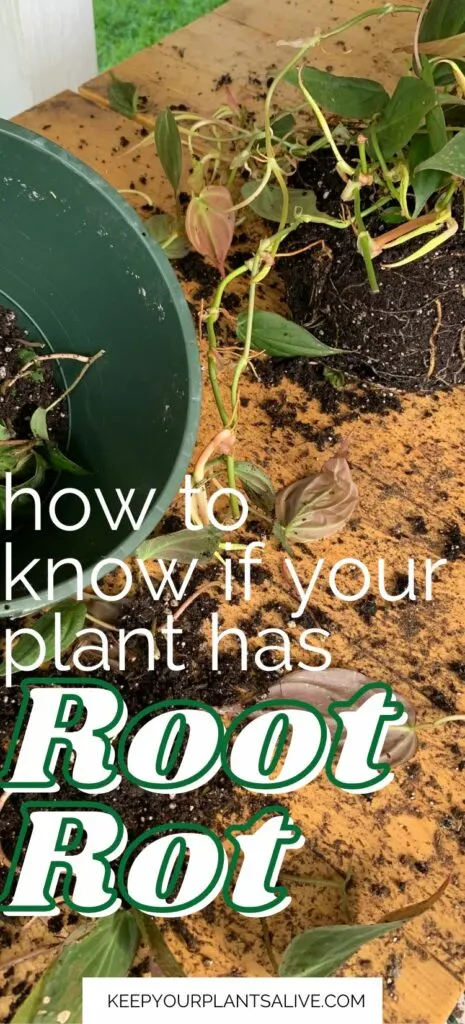
Understanding Root Rot
Root rot is a fungal disease caused by excessive moisture, poor drainage, and lack of oxygen around the plant’s root system.
When roots sit in too much water for too long, no oxygen can get in to be absorbed.
Root rot compromises the plant’s ability to absorb water and nutrients, leading to wilting, yellowing leaves, and eventual plant death.
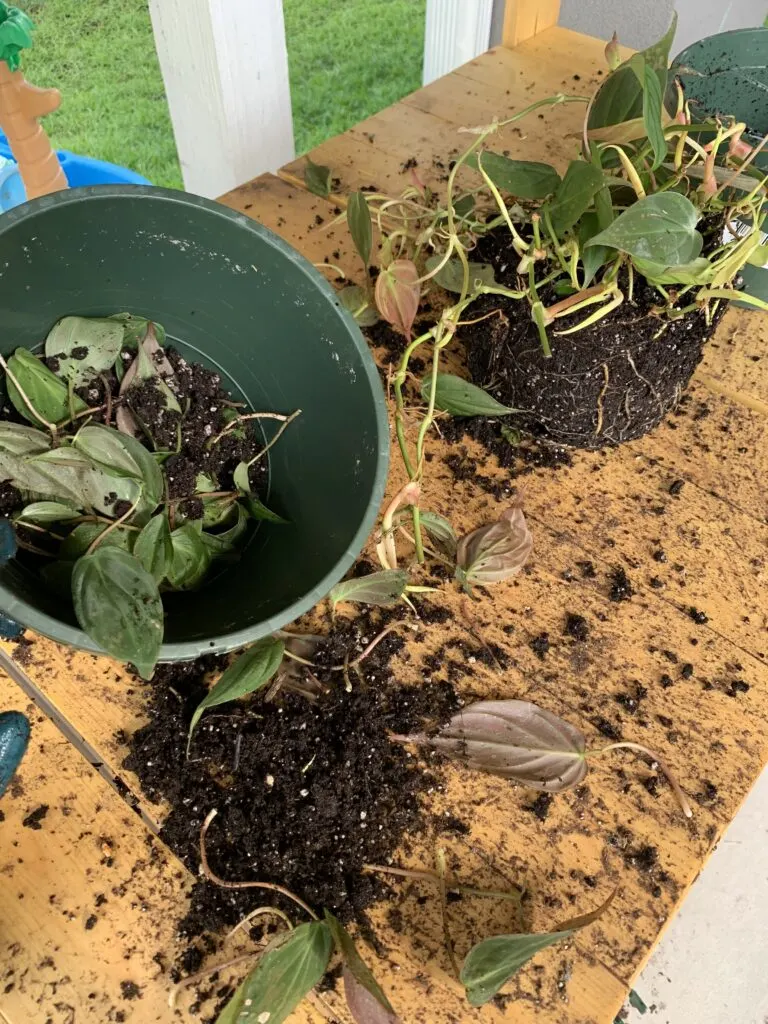
Recognizing the Signs of Root Rot
The main signs of root rot are:
- wilting leaves
- yellowing leaves
- mushy roots
- discolored (usually black) roots
- stunted growth/lack of growth
- very wet, soggy soil (poor drainage)
Wilting and yellowing leaves
When a plant is in distress, one of the first things to happen is leaves go yellow and limp. This is a sign that your plant is in distress, but usually means you still have a chance to save the plant if you take action.
Yellowing usually starts from the lower, older leaves and progresses upward. Remember that yellow leaves will not turn green again. I usually just remove them.
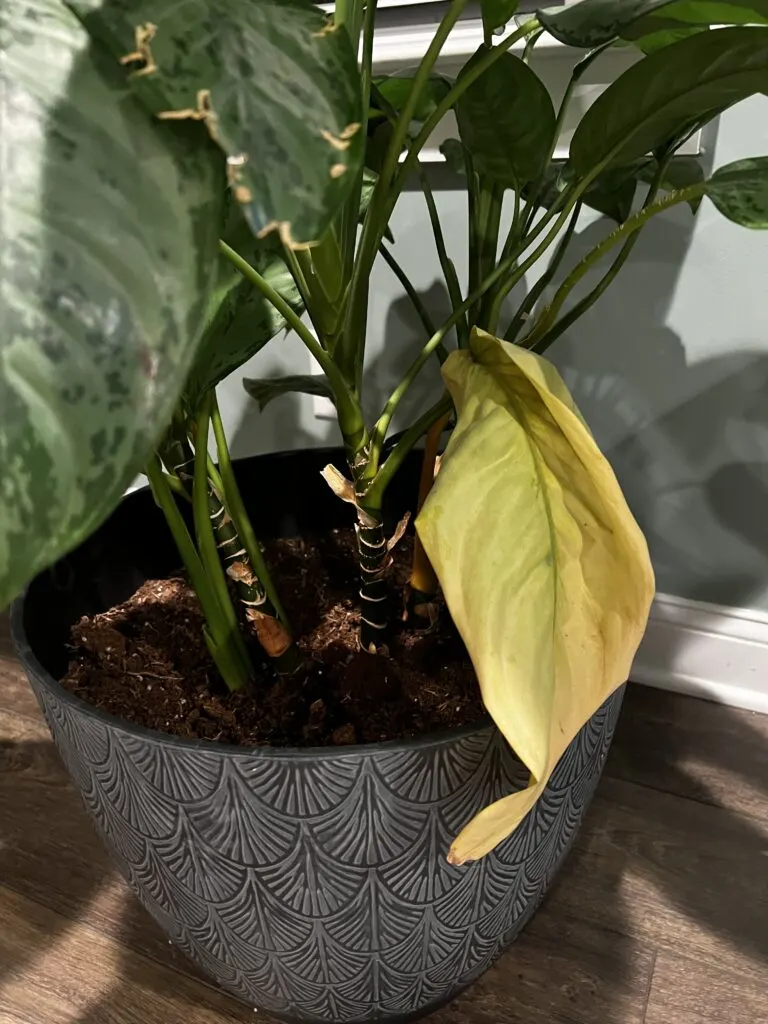
Soft and discolored roots
The most sure fire way to tell that a plant has root rot is to examine the roots. Healthy roots will be white and firm.
If your roots look black or dark brown, feel mushy, or have a stinky rotten egg odor, they are almost definitely rotten.
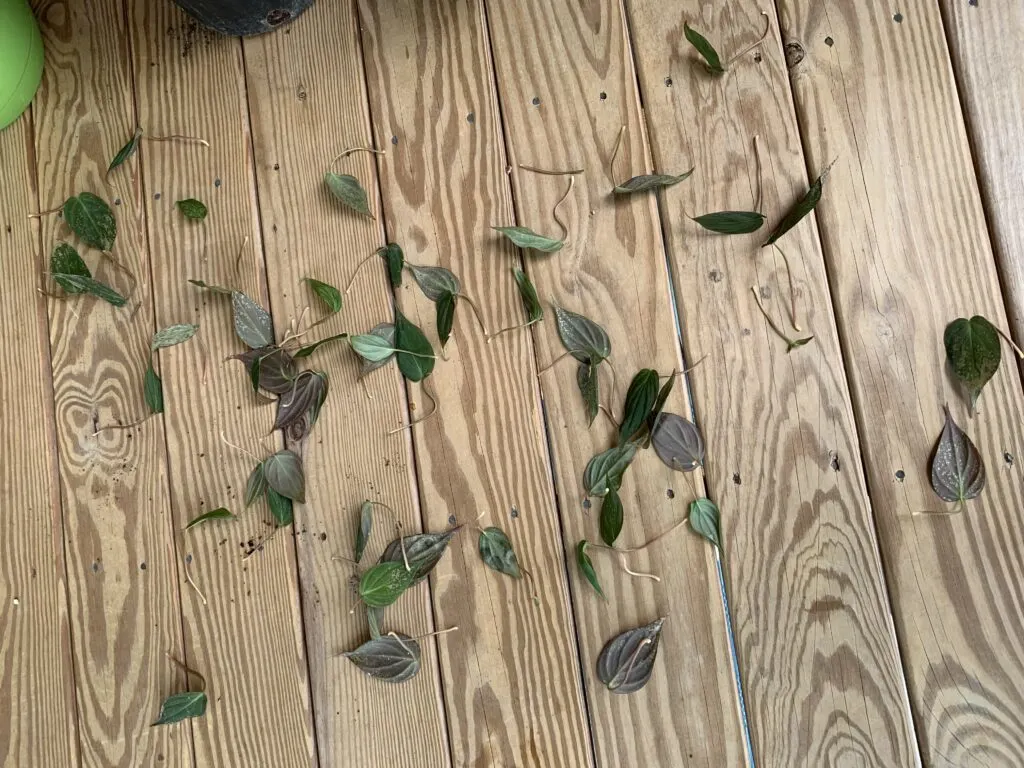
Stunted growth and lack of new growth
One sign that your plant might have root rot is lack of growth. Now, I hesitated to really list this because there are a lot of causes of lack of growth including:
- plant is dormant such as winter
- plant not getting enough light to thrive, just enough to survive
- plant is root bound and needs to be repotted
- plant has root rot and is not absorbing enough nutrients needed to grow
If your plant stops growing or seriously slows down with it’s growing, I’ll always recommend gently removing it from its pot and checking out what is going on with the roots.
Honestly, usually when a plant slows down growing when it should be growing a lot such as during the warm, growing seasons, I find that the plants are root bound.
When the roots have no room to grow, they really slow down the growth of the plant and sometimes can have a hard time absorbing nutrients.
If your plant’s root bound, the roots will look really full and tight in the pot. But when you’re checking, the roots, you could notice that they are black and mushy.
If that is the case, then you were dealing with root rot and not a root bound plant.
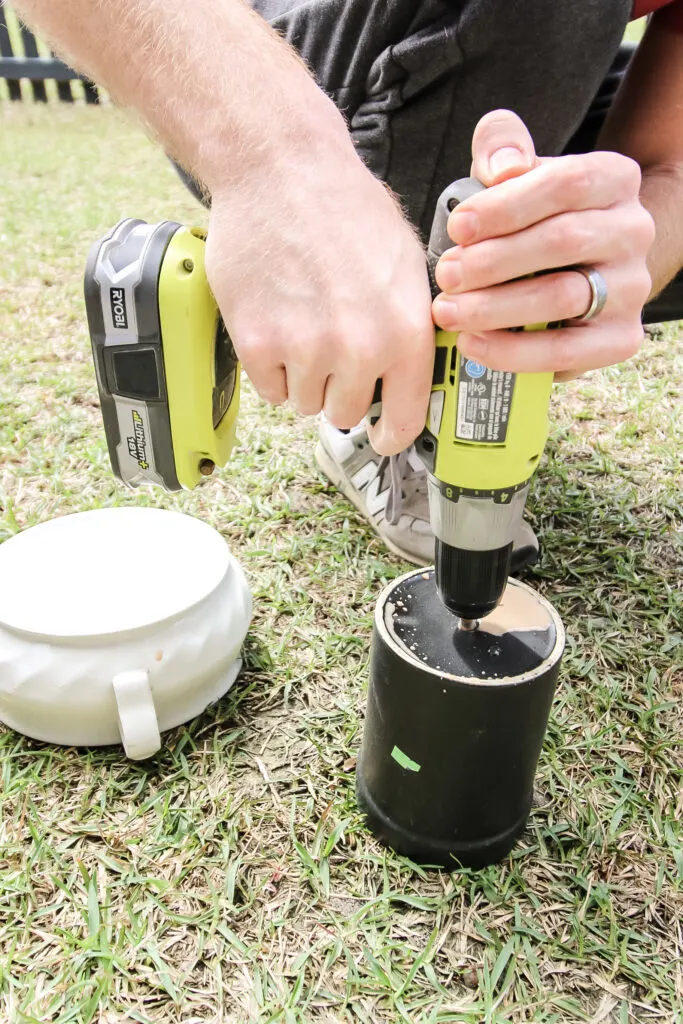
Poor drainage and waterlogged soil
Excessive moisture in the soil is a breeding ground for root rot.
Poor drainage is the number one cause of root rot in a plant, but it also could lead to signs that would make you suspect that the plant might have root rot.
This would be if you look at your plant and noticed that the soil is staying wet for several days after watering it or looks muddy.
Additionally you might start seeing a lot of little tiny gnats. These gnats are a sign of over wet soil and I use these traps to deal with them.
If your plant soil is not draining well you need to drill drainage holes and you can follow these steps to try to dry out your existing soil or go ahead and repot the plant with fresh dry soil.
Steps to Confirm Root Rot
If you suspect root rot, you really need to get in there and take a visual check of the roots.
Gently remove the plant from its pot. Carefully loosen the soil and inspect the roots.
Healthy roots should be crisp and white, while rotting roots will be dark, slimy, and may disintegrate easily.
Check for a foul smell. A strong, unpleasant odor emanating from the roots is a clear indicator of root rot.
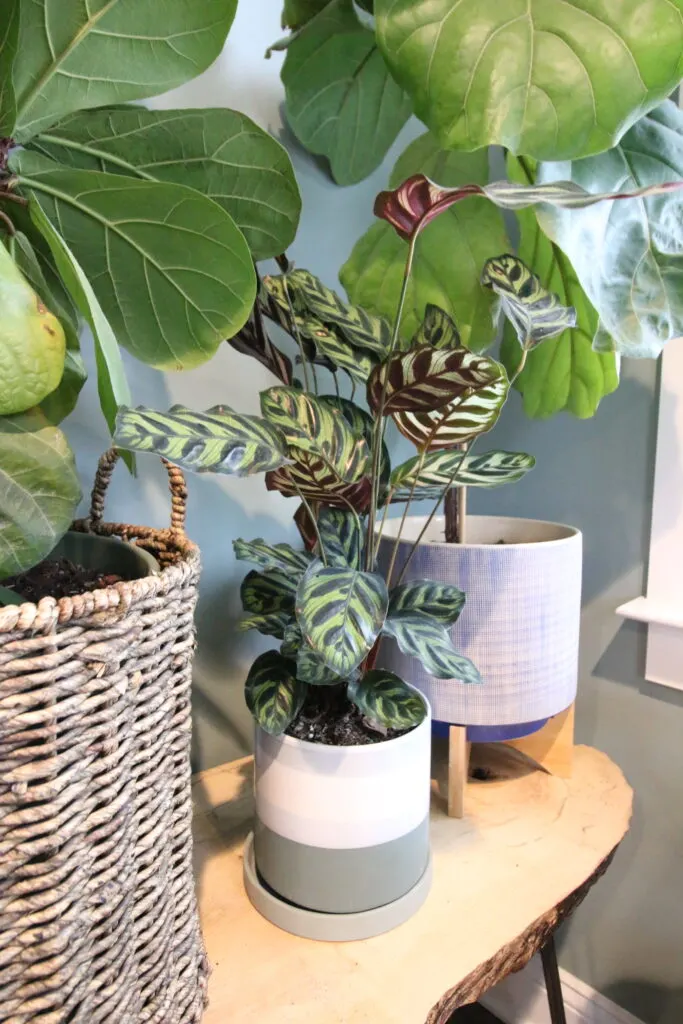
Treating and Preventing Root Rot
Once you determine that your plant definitely has rotten roots, here are the steps to take to treat it!
Remove Affected Roots
Using clean scissors or pruning shears, trim away any mushy or blackened roots. Be cautious not to damage healthy roots in the process.
If the rot is severe, you may need to consider repotting the plant in fresh soil. Be sure that the soil is well draining!
Improve Drainage
Ensure your plant’s pot has drainage holes to allow excess water to escape.
Consider adding a layer of rocks or perlite at the bottom of the pot to enhance drainage.
Use a well-draining potting mix suitable for your plant’s needs.
Never let water sit, even in the drip tray. Dump it out and avoid pooling water at all costs!
Consider trying bottom watering your plants, especially succulents or plants with delicate leaves.
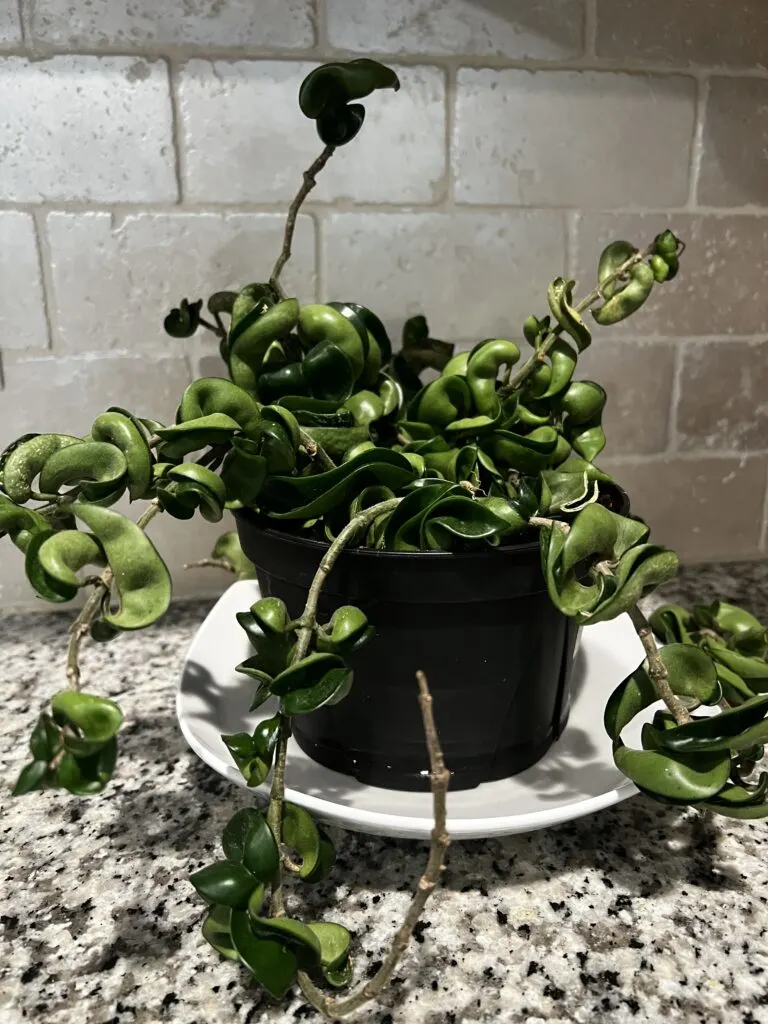
Adjust Watering Practices
Allow the soil to dry out between waterings to prevent overwatering.
Create a watering schedule based on your plant’s requirements and environmental conditions.
Water thoroughly but avoid water logging the soil.
Monitor Light and Temperature
Ensure your plant is receiving appropriate light levels according to its specific requirements.
Maintain suitable temperature conditions, as excessive heat or cold stress can weaken the plant and make it more susceptible to root rot.
Consider moving your plant to a sunnier spot, which will dry the soil out faster than a shadowy spot.
Consider Using Fungicides
If the root rot persists or is severe, you may need to treat the plant with a suitable fungicide.
Follow the instructions carefully and consult with a local gardening expert if needed.
Root rot can be a challenging issue for beginner houseplant enthusiasts, but with proper knowledge and timely action, you can get it under control and keep your plants alive!
Any more questions about root rot in plants?
Thanks for reading!


Hey there, I’m Morgan, a houseplant enthusiast from sunny Charleston, South Carolina. Growing up surrounded by my mom’s lush orchids and African violets, I discovered the magic of bringing nature indoors. Thanks to the pandemic, I delved deeper into houseplants, discovering their power to uplift moods and transform spaces. I’m here to spill all my secrets, helping you pick the perfect houseplant – and make it happy. Let’s keep your plants alive, together! 😊
